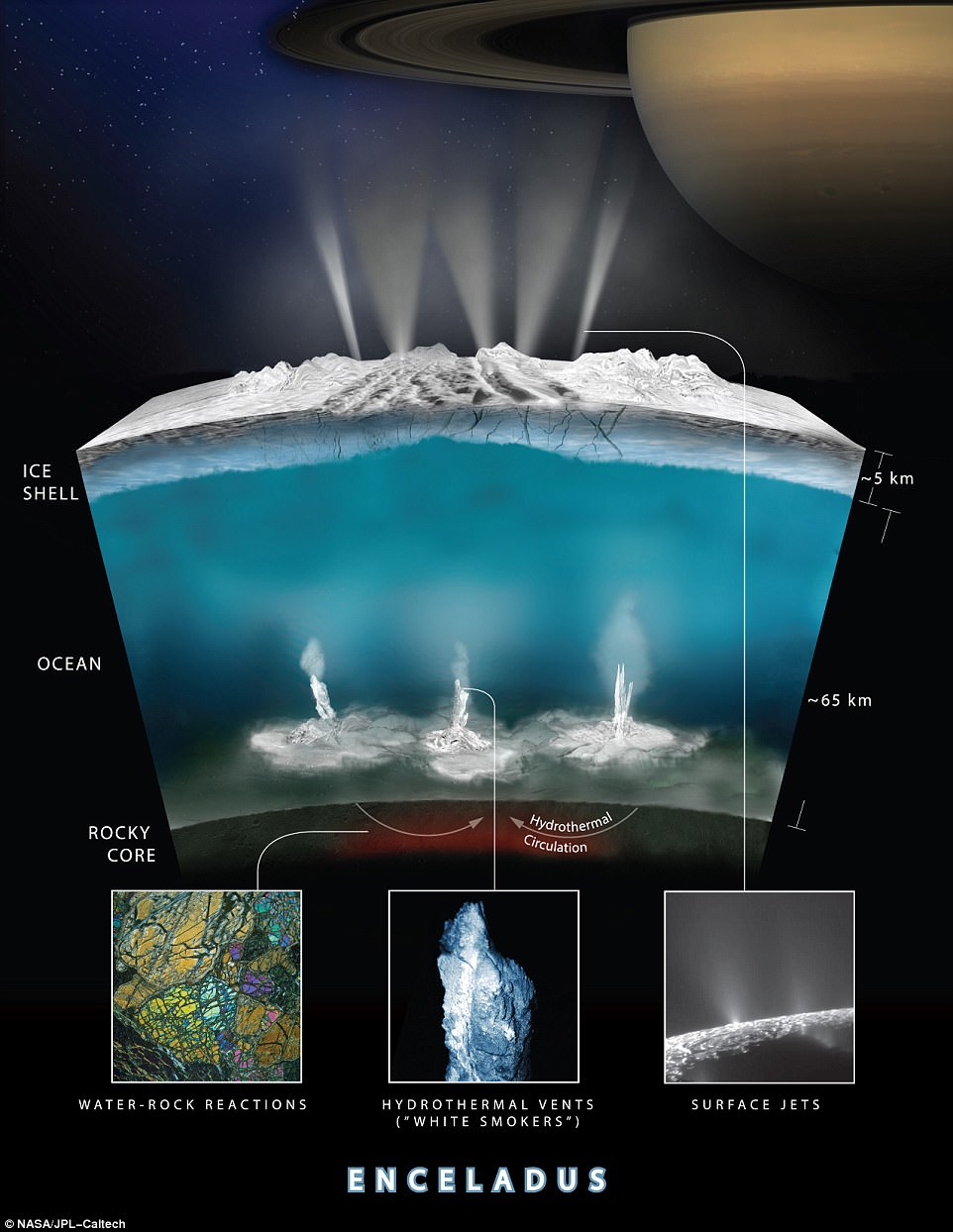nivek
As Above So Below
Could there be life on Saturn’s moon, Enceladus? New research raises the possibility.

Hydrothermal processes on Enceladus


Hydrothermal processes on Enceladus
“The idea that we’ve proposed — and we’ve researched a lot of different ideas trying to come up with an alternative theory — is that actually there’s hydrothermal activity going on deep in the ocean on Enceladus, and it may be producing white and black smokers, kind of like what we see on Earth,” Bolton says.
He explains that on Earth, smokers are deep hydrothermal vents that put out white or black “smoke” underwater, depending on their sulfur content: “Basically, what you have is you have minerals that are very rich in iron interacting with water.” That chemical process forms new minerals, he says — and releases hydrogen.
“In other words, under the deep sea, the water meets the rock, and some chemistry occurs, and hydrogen is released,” he explains. At least, that’s how it happens on Earth — and Cassini data has already shown that the ocean on Enceladus lies above a rocky core.
On Earth, scientists believe that hydrothermal vents were an early source of life. Today, the areas around deep sea vents teem with species that we’re still discovering.
“You don’t need any sunlight at all,” Bolton says. “You just have the microbes basically feeding off of this hydrogen, and that’s its energy source. And around that region on the Earth in these hydrothermal vents, you find little spider crabs, little shrimp, all kinds of different kinds of mussels.”

